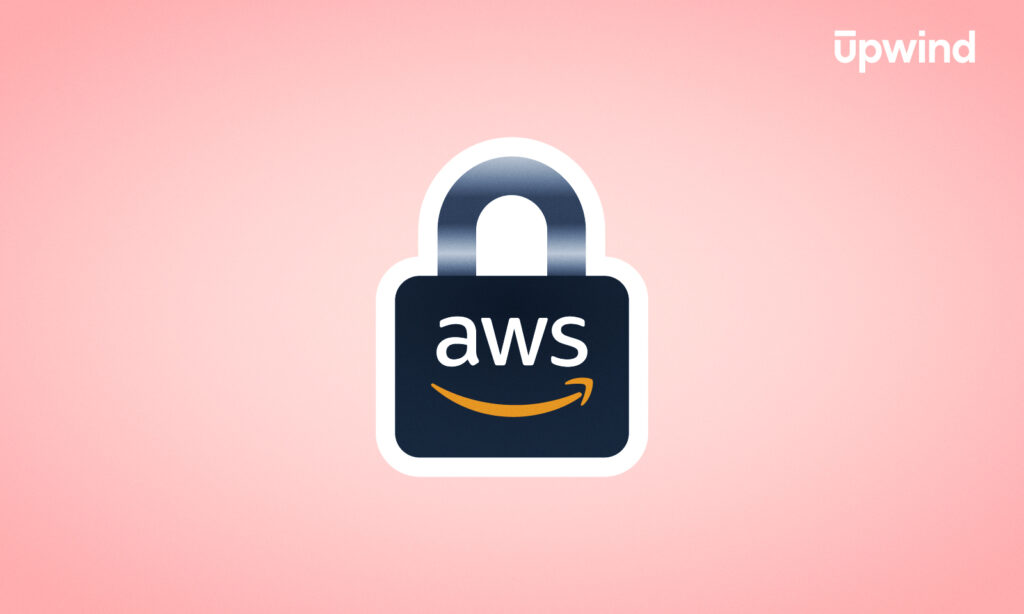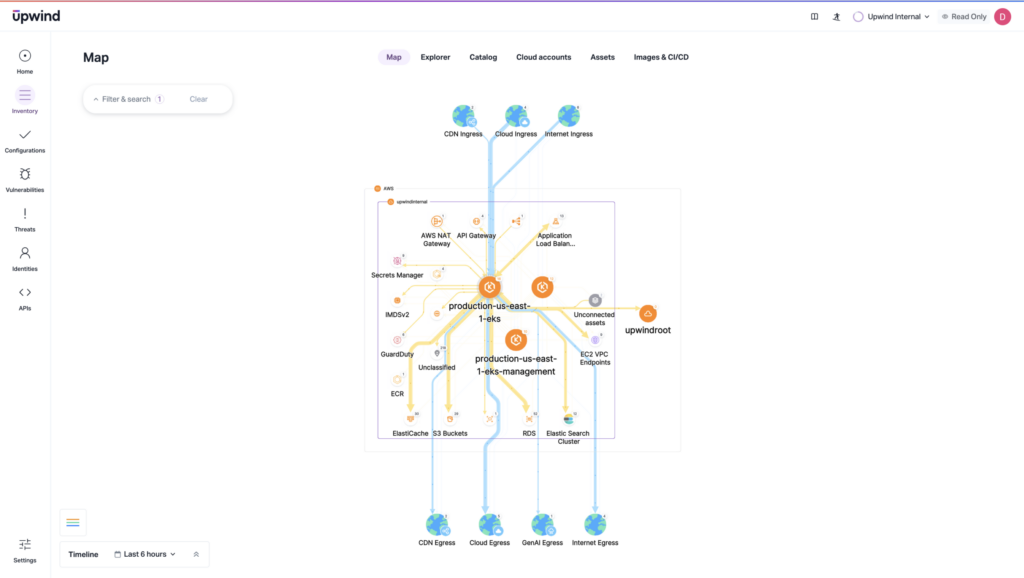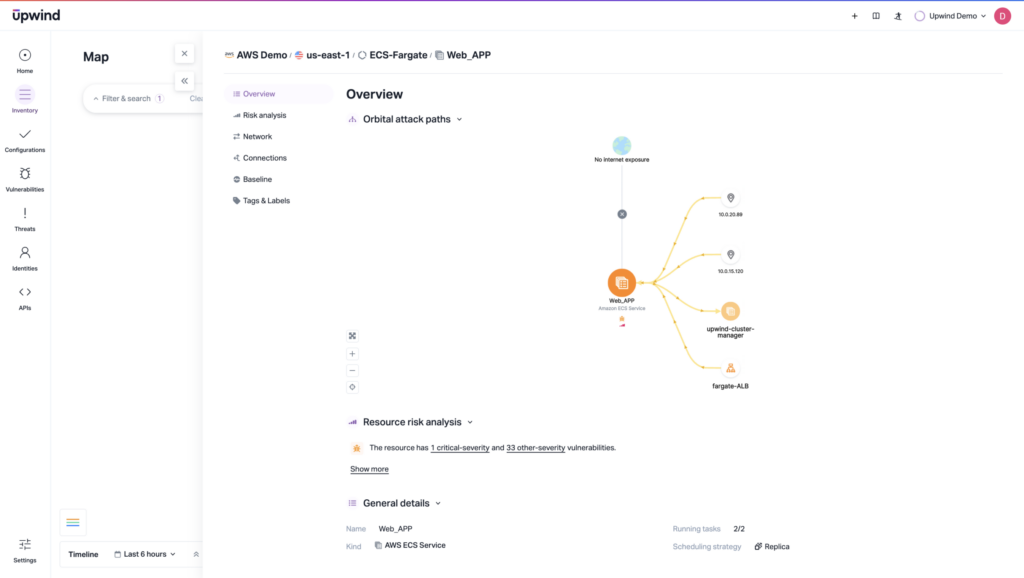
All cloud providers have their own defaults within the shared responsibility model, and Amazon is no different. But how is Amazon Web Services (AWS) unique? And what are AWS security issues, risks, and concerns that go a step deeper than “open Amazon S3 buckets” but really get to the heart of the second-level tech challenges teams face in Amazon’s ecosystem?
We’ve looked at AWS security broadly and explored container security specifics. So you won’t see us cover S3 misconfigurations, Multi-Factor Authentication (MFA) enforcement, or least privilege access tips here.
Looking for a checklist? This isn’t it.
Instead, we’ll tackle specific systemic, AWS-native architecture risks where the platform’s power becomes a potential liability for users — want to weigh all your potential trade-offs? You’re in the right place.
What are AWS Architectural Issues and Risks?
AWS architectural risks aren’t the same as misconfigurations. They stem from how AWS services are designed and operated at scale. These risks often emerge when powerful tools are combined without guardrails, making it harder for teams to see the full impact of changes or automations.
Key risks include:
- Over-permissioned service interactions: Identity and Access Management (IAM) roles or Lambda functions chained together in ways that unintentionally escalate privileges and access sensitive data.
- Complex, multi-account sprawl: Hard-to-monitor environments due to scattered cybersecurity controls that exist across clouds, organizations, Service Control Policies (SCPs), and dev accounts.
- Runtime drift: Cloud resources deviating from IaC templates due to changes post-deployment or manual overrides.
- Limited runtime visibility: Blind spots in EKS, Fargate, or Lambda workloads not covered by traditional agentless scans.
- Inconsistent identity federation: Misaligned trust models across IAM, SSO, third-party CI/CD, and hardcoded secrets.
- Misuse of AWS-native automation: Abuse of CloudFormation, Step Functions, or EventBridge by attackers to persist or move laterally.
Each of these risks reflects the broader security architecture and governance decisions that impact cloud posture in AWS.
Runtime and Container Scanning with Upwind
Upwind offers runtime-powered container scanning features so you get real-time threat detection, contextualized analysis, remediation, and root cause analysis that’s 10X faster than traditional methods.
Exploring the Hidden Architecture Risks that Make AWS Security Harder than it Looks
AWS gets the lion’s share of hacking discussions not because it’s less secure, but because it’s disproportionately targeted compared to less-used platforms.
Some managed detection services report that 96% of incidents they respond to occur in AWS, with just 4% of incidents split between other cloud services, Microsoft Azure and Google Cloud Platform (GCP).
While surface-level misconfigurations get headlines, the real security challenges in AWS emerge in how services interact. They drift. They scale unevenly. They interact imperfectly. And over time, these deeper architectural risks expose cracks that static tools were never built to see, and operational awareness is now key to managing them.
Over-Permissioned Service Interactions
AWS makes it simple to interlink services like Lambda and DynamoDB, or Step Functions managing ECS tasks. But it’s also easy to give excessive permissions. Since it’s so simple to do, it often creates complex, undocumented chains of trust.
Look for scenarios like where a developer gives a Lambda function AdministratorAccess to debug a deployment. Later, that function could be triggered externally via an API gateway, exposing full AWS access to the public.

Complex Multi-Account Sprawl
AWS helps segment workloads, but each account risks developing its own security drift and falling victim to a mish-mash of policies and enforcement. SCPs may be inconsistently applied, and visibility across accounts isn’t a given.
In this scenario, a DevOps team might spin up a temporary account for testing, but fail to apply security guardrails. Over time, it comes lto live permanently in the environment. However, that doesn’t mean it comes with CloudTrail logging or MFA requirements.
Runtime Drift from Infrastructure-as-code (IaC)
IaC tools define the intended state. But they don’t prevent drift from happening after deployment. And change is likely with manual changes, auto-scaling, and cloud-native automation. For instance, developers may temporarily disable encryption to speed a migration, but introduce risk without triggering an IaC alert.
Limited Runtime Visibility in Ephemeral Environments
Short-lived workloads in Lambda, Fargate, and EKS can launch and disappear in seconds. That’s too fast for traditional scanners. For example, an attacker can exploit a containerized API vulnerability in a Fargate task that runs for just seconds per request. Static tools never see it, and there’s no visibility into what the container did during execution.

Inconsistent Identity Federation
Hybrid identity setups lead to excessive access and missed revocations. For instance, a contractor offboarded from an identity provider may find their long-lived IAM access key in AWS remains active for months, allowing console access to sensitive billing data.
Misuse of AWS-Native Automation
Attackers have discovered the lucrative attack path that involves abusing AWS-NAtive features like CloudFormation, Step Functions, and EventBridge to automate persistence, lateral movement, and stealth operations. For instance, a compromised IAM role might use CloudFormation to create a hidden IAM user and Step Functions to rotate keys, all orchestrated inside AWS itself (and without triggering malware alerts).
Prioritizing AWS Security Issues Based on Visibility and Blast Radius
Knowing the deeper architectural risks in AWS, teams might start asking themselves more nuanced questions: Which matters most in a breach? Which are the hardest to detect before it’s too late?
In a complex cloud environment, not all risks are equally apparent or equally damaging. Some threats, like over-permissioned service chains, are hard to spot but have massive blast radius potential. In the meantime, others, like IaC drift, might be easier to log, but can still leave gaps if runtime monitoring is missing.
Here’s a comparison to help categorize the risks based on blast radius and visibility.
| Risk | Blast Radius | Visibility (Out of Box) | Example Tool Needed for Detection |
| Over-permissioned service interactions | High | Low | IAM relationship graph with runtime triggers |
| Multi-account sprawl | High | Medium | Cross-account policy compliance tracking |
| IaC drift vs runtime state | Medium | High (IaC) and Low (runtime) | IaC-to-runtime drift detection engine |
| Limited visibility in ephemeral compute | Medium-High | Low | Runtime trace of short-lived container actions |
| Inconsistent identity federation | HIgh | Medium | Credential usage audit + idle key detection |
| AWS-native automation misuse | Very High | Very low | Behavioral detection of AWS-native orchestration |
What do you need to know?
- High-blast, low-visibility risks are the most dangerous. Attackers can do significant damage before teams are even aware they’re happening.
- Misuse of AWS-native automation is particularly stealthy because it rarely triggers malware alerts or EDR tools.
- Over-permissioned service chains and identity federation breakdowns can fly under the radar when teams rely on static scanners and audits.
- Runtime tools that go beyond CSPM or IaC scanners are key for visibility into ephemeral environments and behavioral misuse.
So, which tools do the most in the majority of cases?
Most organizations don’t start with holistic tools that help in most of these scenarios; they start with a mix of point tools, usually starting with Cloud Security Posture Management (CSPM) and adding Cloud Infrastructure Entitlement Management (CIEM) or Endpoint Detection and Response (EDR), and perhaps IaC or vulnerability scanning.
But even deeply considered point solutions need to be perfectly integrated and eliminate blind spots (as well as incorporate runtime visibility) in order to make headway into AWS issues and risks.
Here are some key comparisons for common tool combinations and what teams might be lacking.
| Tool Combination | What it Covers Well | What Gaps it Leaves in AWS |
| CSPM + IaC Scanner | Misconfiguration detection. Security policy enforcement. Compliance audit readiness. Prevents risky deployments via IaC | Doesn’t detect runtime drift. No visibility into short-lived workloads. Can’t see service interactions |
| EDR + SIEM | Host-level process detection. Centralized log management. Incident response playbooks | Doesn’t support serverless (Lambda, Fargate). No cloud-native behavior detection. Limited AWS context |
| CSPM + CIEM | IAM permissions modeling. Least privilege enforcement. High-level org-wide posture visibility | No container runtime visibility. Blind to active privilege use. Can’t detect lateral movement patterns |
| Open-Source Stack | DevSecOps alignment. Low-cost entry. Flexible scanning options | No single view of risk. High maintenance. Poor AWS-native service coverage |
| CNAPP with Runtime Sensors | End-to-end visibility from config to runtime. Detects ephemeral and behavioral threats. Correlates detection and context | Covers most AWS-native architecture. Bridges dev, ops, and security teams |
Even CNAPPs Come with Trade-Offs
While runtime-powered CNAPPs offer unmatched visibility with runtime, identity, IaC scanning, and misconfiguration components, they’re not without their own complexities, and choosing the right one is about making strategic trade-offs based on architecture and risk tolerance, not replacing everything.
When it comes to AWS-specific issues, trade-offs still exist:
- Deep runtime requires deep AWS context: Even CNAPPs can struggle to model every edge case in AWS-native automation. Context-aware alerting matters more in AWS than it does in GCP or Azure.
- Ephemeral visibility isn’t plug-and-play: Monitoring Fargate, Lambda, or containers in EKS still requires sensors, and teams will have to decide if they’re ready to deploy them.
- Identity modeling at AWS scale is a complicated task: AWS IAM is notoriously complicated, and especially if teams use hybrid federated identities, they’ll see normalization gaps and extra tuning.
- CloudTrail is not complete behavioral detection: CNAPPs can rely on CloudTrail and Config as inputs, but real-time abuse still requires runtime process-level awareness. Does your CNAPP have it?
- Full coverage can mean overlaps: Teams with standalone CSPM, CIEM, EDR, and IaC tools may feel like a CNAPP is just another way to duplicate their existing workflows, and complicate them, to boot. Teams need to tackle tool consolidation trade-offs and the issue of ownership.
Upwind Exposes What Static Tools Miss
When it comes to AWS architecture risks, most tools stop at policy checks and configuration audits. But Upwind is focused on what actually happens at runtime. It traces how services interact, sees how identities behave, and notices when infrastructure drifts from intent.
That’s a leap forward from static tools, helping teams uncover privilege escalation paths, ephemeral attack activity in Lambda or Fargate, and lateral movement that exploits AWS-native automation. What to see Upwind connect the dots? Schedule a demo.
FAQ
Is AWS really secure?
Yes, but only if teams configure it that way. AWS provides strong security, but customers must set guardrails, monitor behavior, and manage access control across every AWS account. Here’s what to know:
- AWS secures the infrastructure, but teams are responsible for workload and identity security.
- Misconfigured IAM roles, excessive privileges, and open services are still typical.
- Without runtime monitoring, malicious activity inside an AWS account can go undetected.
- Cross-account access and AWS-native service chaining often create risks.
What are the five 5 security issues relating to cloud computing?
Cloud computing brings flexibility that’s indispensable. But with it, teams face key security issues:
- Access control gaps
- Data and other security reaches
- Misconfiguration
- Account hijacking
- Lack of runtime visibility
These risks make it important to combine configuration management with live monitoring across every cloud account.
Is AWS safer than Azure?
Easy answer? No. Better answer: how teams configure and monitor their cloud has more to do with safety than which cloud provider they choose. Most breaches stem from missteps in access control, not flaws in the platform or the responsibilities handled by providers.
But there are some key differences between the 2 services that may be important to teams and their current abilities to secure the platform:
- AWS has more mature service granularity. That can mean more control, but also more room for mistakes for users.
- Azure offers strong default integrations with enterprise identity providers.
- AWS accounts sprawl faster and can spark governance challenges.
- Azure’s central tooling can simplify security for immature teams.
- Both need runtime monitoring to detect active threats.
What is an AWS misconfiguration?
AWS misconfigurations are directly related to AWS, and are among the most common AWS cloud security issues teams face in the Amazon cloud environment. They’re not flaws in AWS itself. Instead, they’re the result of customer configuration issues within an AWS account when services aren’t set up ideally. Examples include:
- Publicly accessible S3 buckets without restrictions
- Overly broad access control in IAM policies
- Unencrypted storage columns
- Disabled security groups or firewalls
- Missing MFA or logging for root users
How can you prepare for the AWS security issues?
Preparing for AWS security issues means building visibility, enforcing access control, and preparing systems to detect drift across AWS cloud accounts, all crafted to spot issues and remediate them faster. Common preparations should include:
- Enforcing least privilege and rotating credentials
- Continuously monitoring for misconfigurations, drift, and privilege changes
- Using runtime tools for real-time behavior detection in Lambda, Fargate, and EKS
- Auditing each AWS account using SCPs and AWS CloudTrail
- Strategizing ways to detect misuse of AWS-native automation







